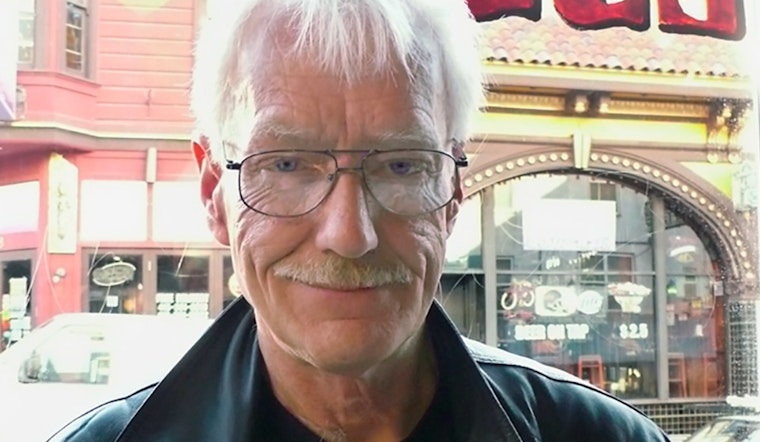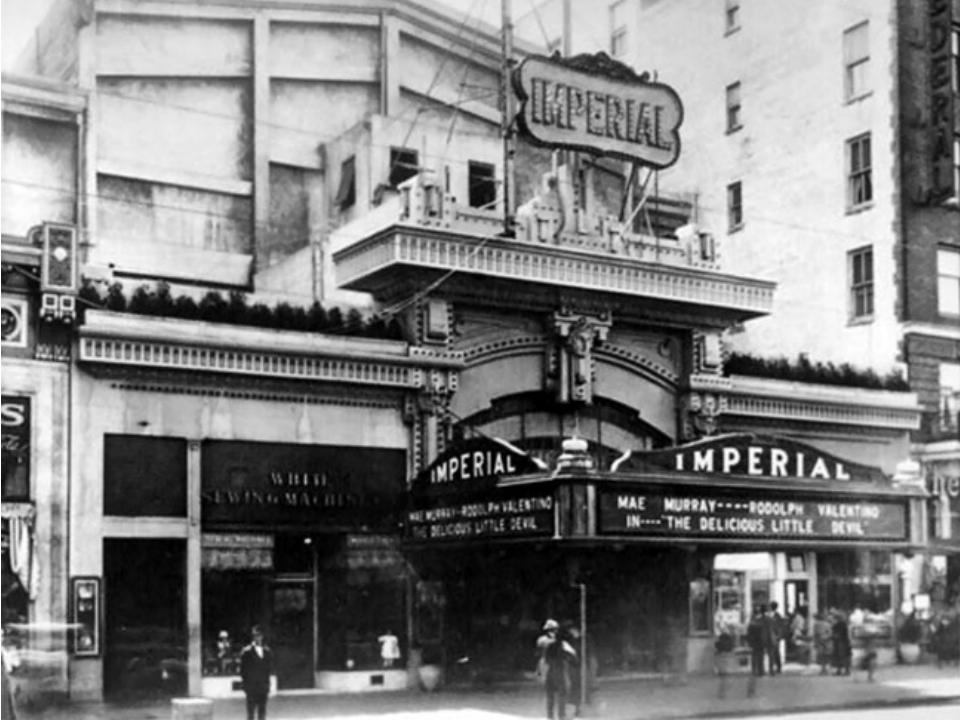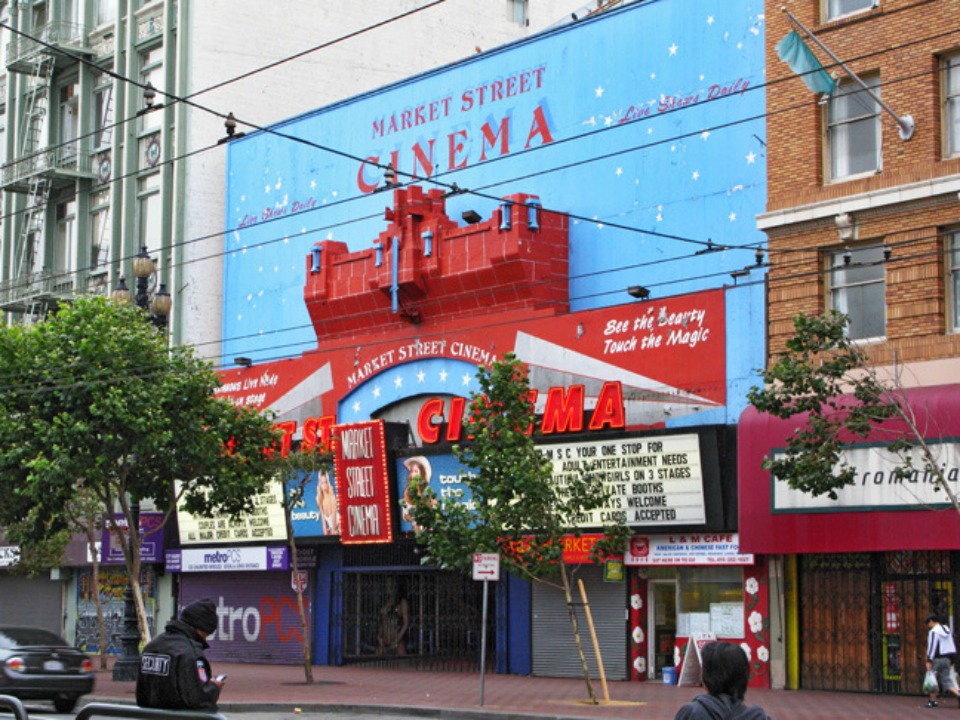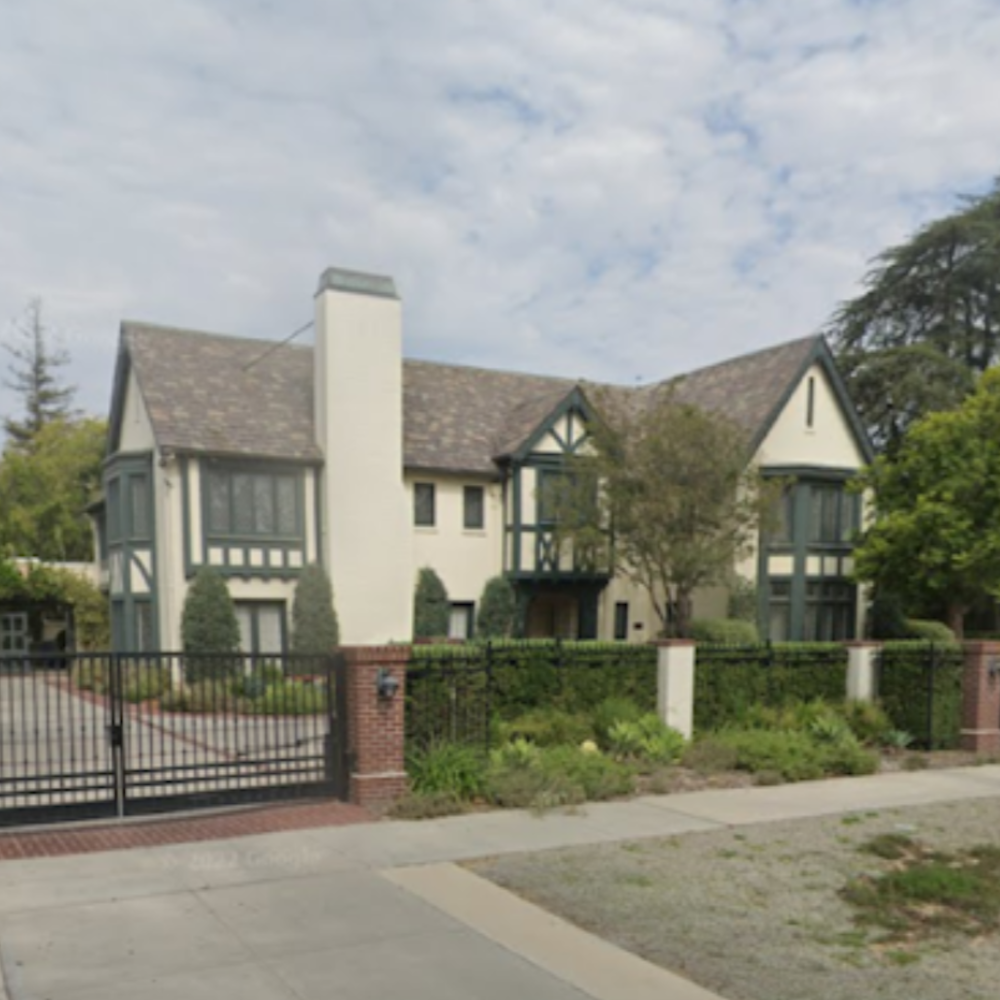
When Hoodline launched coverage of the Tenderloin last month, we received a number of tips from readers pointing us to longtime neighborhood blog Up From The Deep, and to Mark Ellinger, the man behind it.
As we started researching buildings and history in the neighborhood, Mark's name and stories popped up again and again. This week, we finally sat down with the man himself to learn about why and how he launched his neighborhood documentary project.
Mark has lived a textured and full life. He attended the San Francisco Art Institute and studying painting, is a talented musician, has worked with such audio companies as Aquarius Electronics and Orban Associates, and with a friend launched a recording studio called Truth and Beauty in the early 1980s.
In the late '80s and into the '90s, he struggled with drug addiction and depression, and frequently lived on the streets. A near-death experience in 2001 propelled him into sobriety, which is where the story of Up From The Deep begins. For over a decade Mark has researched and photographed the architecture of the Mid-Market and Tenderloin areas, writing thoughtful and deeply-researched essays on buildings and times that are rapidly changing.
What is your personal history with the Mid-Market and Tenderloin areas?
"When I was discharged from the hospital (full story here) in early 2001, I really didn't have many options. I needed to find something that I could afford to live in. I was fortunate to get state disability insurance—that was like six hundred and some dollars a month, which even in 2001 was not much. Pretty much every place I looked at sucked up the better part of that. The only places that were affordable were in this part of the city.
"I bounced around between different SROs for a few months, and they all had their own particular horrors. I finally ended up in Shree Ganesha on 6th Street in May of 2001. And it was great, because it was a small place, only 27 rooms. It was quiet, and the manager only rented to long-term tenants, didn't allow people for just a night or a week. So a lot of the tenants were Filipinos who moved into the neighborhood quite some time before, when Manilatown was destroyed in the 1970s. It was actually a very cozy little place. It's still there, but it's not what it used to be. But while I was there it was perfect, I was really fortunate to get in."
When and why did you launch Up From The Deep?
"I'd been at Shree Ganesha for close to two years when my neighbor across the hall was going to throw away this little 1 megapixel digital camera and asked me if I wanted it. I said yes. So at the end of 2002 that's when I started photographing my surroundings. I focused on the architecture. It was really plain even then that a lot of familiar old signs and buildings were going to change or disappear. I wanted to have some sort of document of it before it all went."
 (Article on Mark in a 2003 copy of Central City Extra)
(Article on Mark in a 2003 copy of Central City Extra)
When did your work first start getting recognition?
"I had a show of my work at City Hall in 2006. I had several months to put it together, and I realized that I needed to have some kind of narrative for my photographs. They're just pretty pictures by themselves, it's not enough. But I had no idea what that narrative was going to be. It was almost exactly the same time that I was preparing for this show at City Hall that I decided that a blog would be a pretty good platform to just experiment and get feedback. I started a blog called The Hotel Project on Blogger."
How did you start researching the Tenderloin's architectural history?
"In the beginning I wrote exclusively about my experience with the architecture, what it was like that day to shoot. It was all very personal stuff, not a lot of history. But as I developed my work for that show, it became evident that I really needed to have something solid about the buildings and the neighborhoods they were in. That's when I first started researching Classical Revival Architecture.
"I had no idea what I was doing. Just like everything about this entire project, I learned it all the hard way, by trial and error. Digital photography, historical research, writing. If nothing else I'm a hard worker, so it's all come together.
"In 2007 and 2008 I got to work with Michael Corbett, an architectural historian. I worked with him on a survey of Tenderloin architecture, and that survey most conclusively defined the extent of the neighborhood, and nominated it to the National Register of Historic Places. I learned quite a bit about property research from Michael, because he was patient enough to answer my questions."

(Imperial Theater, 1919. Photo: Bancroft Library, U.C. Berkeley via Up From The Deep)

(Imperial Cinema, present day. Photo: Mark Ellinger, Up From The Deep)
How has Mid-Market changed since you began this project?
"Looking at photos I took 10 years ago of that street, it doesn't look like that anymore. In a few more years it's going to be totally unrecognizable. The remains of the Forest Building, the old Imperial Theater, and the nasty little storefronts plugging the holes where the Paramount used to be. Those three spots, on that block (between 6th and 7th streets) of Market, are all slated for high-rise condos.
"It makes me so sad. That's the one block of the Mid-Market corridor that so far has remained pretty intact. The architectural harmony of that block was really quite wonderful. The buildings are all about the same height. The facades are different, but they all have the imprint of the Ecole des Beaux Arts in Paris, because they were all built as part of the City Beautiful Movement.
"Five years from now it's all going to be gone. It just breaks my heart."
In one of your posts you wrote "we're far too willing to dispose of the old because we are told new things are better." Is work is about helping people understand the quality of what was there before?
"That's totally what drives what I do, absolutely. From early on that was my goal, to change people's perspectives, and give them their own sense of appreciation for what we have. There are a handful of people who've told me that I've really changed the way they see this stuff. That means a lot to me. I don't have any notions that I'm going to change the sweep of history here, but it's important to me that what there is now isn't forgotten.
"The machinery that is driving these changes is way larger than just a few people. But it makes it no less important to me to keep doing it, to keep pointing out what we're throwing away."
To learn more about Mark and the architectural and social history of Mid-Market and the Tenderloin, visit Mark's blog Up From The Deep.









